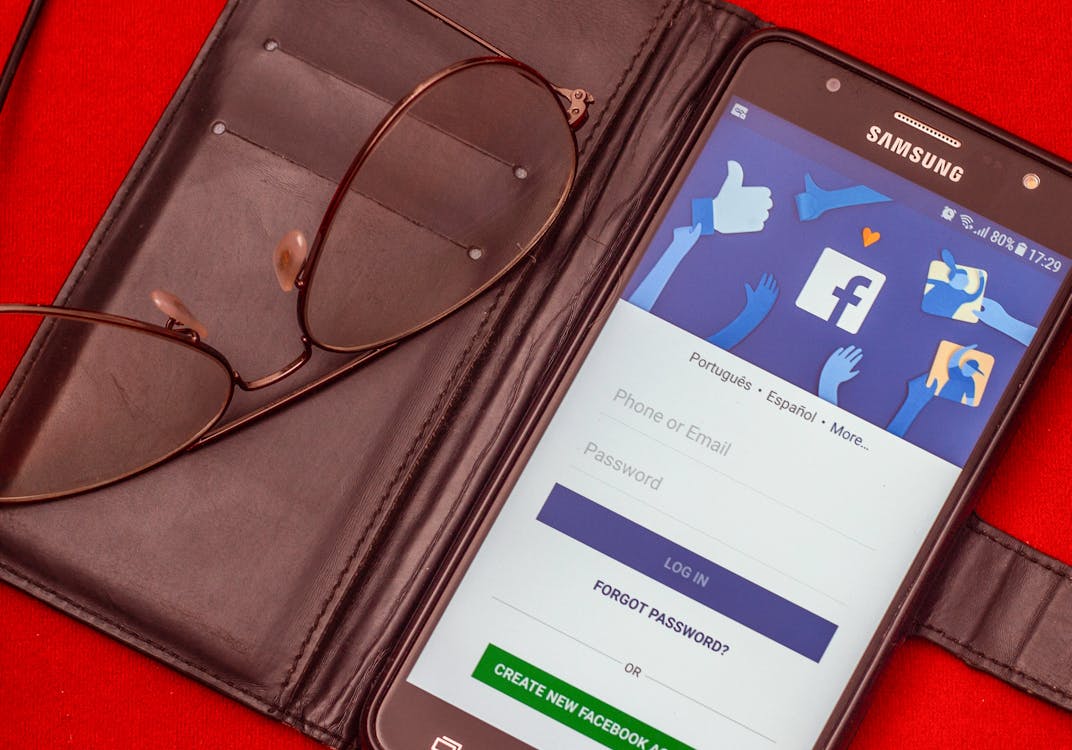If Facebook Is Not Spying On Us, Why Do We Get Ads For Things We Speak About?

Have you ever had a casual conversation about a product or service, only to see an ad for it moments later while scrolling through Facebook? It feels almost magical—like your phone might be listening to every word you say. While some dismiss this as coincidence, others are convinced it’s a sign of something more sinister.
But is Facebook really eavesdropping on your conversations, or is there another, less obvious explanation for these eerily accurate ads? The answer lies somewhere in the fascinating intersection of technology, data, and the power of algorithms.
The Truth About Facebook’s Practices
Many users have experienced discussing a product or topic, only to encounter related advertisements on Facebook shortly thereafter. This phenomenon has led to widespread speculation that Facebook might be eavesdropping on private conversations to tailor its advertising. However, the reality is more nuanced.
Facebook has consistently denied using device microphones to listen in on user conversations for ad targeting. While Facebook may not be listening to conversations, it employs sophisticated data collection methods to serve targeted advertisements:
- User Activity Monitoring: Facebook tracks user interactions on its platform, including likes, shares, and posts, to build detailed profiles that inform ad targeting.
- Third-Party Data Sharing: A 2024 study revealed that, on average, data from 2,230 different companies was shared with Facebook for each user, with some users’ data being shared by nearly 48,000 companies. This extensive data sharing enhances Facebook’s ability to deliver relevant ads.
- Location Tracking and Social Circles: Facebook utilizes location data and analyzes social connections to infer potential interests, further refining ad targeting strategies.
The precision of Facebook’s ad targeting can create the illusion that the platform is listening to conversations. In reality, it’s the result of advanced algorithms analyzing vast amounts of data to predict user interests. This can lead to situations where, after discussing a topic with friends—who may have previously searched for or engaged with related content—you begin to see corresponding ads due to overlapping data profiles and shared online behaviors.
How Targeted Ads Actually Work
The uncanny relevance of ads on platforms like Facebook often leads users to wonder if their devices are eavesdropping on private conversations. In reality, the precision of these advertisements stems from sophisticated data collection and analysis techniques that predict user interests and behaviors.
Facebook employs a variety of methods to gather data, enabling highly targeted advertising:
- User-Provided Information: When users create profiles, they share details such as age, gender, location, interests, and more. This self-reported data forms the foundation for ad targeting.
- On-Platform Activity: Interactions within Facebook—likes, shares, comments, page follows, and group memberships—are meticulously tracked. Each action contributes to a comprehensive understanding of user preferences.
- Off-Platform Tracking: Through partnerships and technologies like the Facebook Pixel, the platform monitors user behavior across the internet. This includes websites visited, purchases made, and even search queries, allowing Facebook to build a more detailed user profile.
- Location Data: With access to a user’s location, Facebook can serve ads relevant to specific geographic areas, enhancing the likelihood of engagement.
 Image source: Pexels
Image source: Pexels
Once data is collected, Facebook’s algorithms analyze it to identify patterns and predict future behavior:
- Behavioral Predictions: By examining past actions, the platform anticipates what content or products might interest a user, enabling the delivery of pertinent advertisements.
- Lookalike Audiences: Advertisers can target users who resemble their existing customer base. Facebook identifies users with similar demographics and behaviors, broadening the reach to potential new customers.
- Real-Time Bidding: When a user is about to see an ad, an instantaneous auction occurs among advertisers vying for that impression. The winner’s ad is displayed, often determined by bid amount and ad relevance to the user.
The convergence of these data collection and analysis methods can create scenarios where users perceive that their devices are listening to their conversations. For instance, discussing a product with friends may lead to related ads because:
- Shared Interests: Friends often have common interests and online behaviors, leading to similar ad targeting.
- Recent Searches: If a friend searches for a product and you engage with their content, Facebook’s algorithms may infer your interest as well.
Being in the same location as someone who has shown interest in a particular topic can influence the ads you see, a phenomenon known as proximity advertising.
Why It Feels Like Spying
The sensation that Facebook is eavesdropping on your conversations often stems from its sophisticated data collection and ad-targeting mechanisms. While Facebook denies listening to private conversations, the precision of its targeted ads can create a strong illusion of surveillance.
A psychological phenomenon known as the Baader-Meinhof effect, or frequency illusion, contributes to this feeling. Once you become aware of something, you start noticing it more often, creating the perception that it’s suddenly everywhere. In the context of Facebook ads, discussing a topic and then seeing related ads reinforces the belief that the platform is listening, even when it’s not.
Another factor is proximity advertising, where ad tech companies use data such as shared Wi-Fi networks or location information to target ads. For instance, if you discuss a vacation destination with friends who have searched for it online, related ads might appear on your feed due to shared interests and overlapping data profiles.
Research also shows that users often find targeted ads intrusive, especially when they are highly personalized. While behaviorally targeted ads are twice as effective as non-targeted ones, they can lead to discomfort and concerns about privacy.
Steps to Protect Your Privacy
 Image source: Shutterstock
Image source: Shutterstock
While Facebook’s data collection practices are extensive, users can take proactive measures to safeguard their personal information and limit targeted advertising. Here are some steps to enhance your privacy on the platform:
1. Adjust Ad Preferences
- Access Ad Settings: Navigate to your Facebook account settings and select “Ad Preferences.”
- Review Advertisers: Examine the list of advertisers who have your contact information and remove any that seem unfamiliar.
- Limit Ad Topics: You can opt to see fewer ads related to specific topics by managing your ad preferences.
2. Manage Off-Facebook Activity
- View Off-Facebook Activity: Facebook tracks your activity on other websites and apps. To review this data, go to “Settings & Privacy” > “Settings” > “Your Facebook Information” > “Off-Facebook Activity.”
- Clear History: Use the “Clear History” option to disconnect past off-Facebook activity from your account.
- Manage Future Activity: Disable future off-Facebook activity tracking by selecting “Manage Future Activity” and toggling off the setting.
3. Limit App and Website Access
- Review Connected Apps: In your settings, under “Apps and Websites,” review and remove any third-party apps or websites that you no longer use or recognize.
- Restrict Permissions: For apps you continue to use, limit the information they can access by adjusting their permissions.
4. Adjust Profile Visibility
- Control Who Sees Your Information: Set the visibility of your personal information, such as your phone number, email, and birthday, to “Friends” or “Only Me” to prevent public access.
- Limit Friend Requests: In the “Privacy” settings, you can control who can send you friend requests and who can look you up using your email address or phone number.
5. Use Browser Extensions
- Install Privacy Tools: Consider using browser extensions that block tracking scripts and ads, such as uBlock Origin or Privacy Badger, to enhance your online privacy.
6. Regularly Review Privacy Settings
- Conduct Privacy Checkups: Facebook offers a “Privacy Checkup” tool that guides you through your privacy settings, helping you make informed choices about your data.
- Stay Informed: Regularly review Facebook’s data policies and updates to stay informed about how your information is used.
By taking these steps, you can significantly reduce the amount of personal information shared and regain control over your digital privacy.
The Bigger Picture: Data Overreach vs. User Responsibility
 Image source: Shutterstock
Image source: Shutterstock
The dynamic between Facebook’s data collection practices and user responsibility is complex, raising important questions about privacy, consent, and the ethical use of personal information.
Data Overreach by Facebook
Facebook has faced significant scrutiny for its extensive data collection methods. A prime example is the Cambridge Analytica scandal, where data from millions of users was harvested without their consent for political advertising. Incidents like these highlight substantial lapses in data protection and user privacy.
In response, regulatory bodies have imposed hefty fines on Facebook. For instance, the Federal Trade Commission issued a $5 billion fine for privacy violations, signaling the severe consequences of data overreach. Despite these measures, concerns about how platforms handle personal information persist.
User Responsibility
While Facebook’s practices have drawn criticism, users also play a critical role in safeguarding their privacy. Many individuals continue to share sensitive data online without fully understanding the risks. Studies show that even with increased awareness of privacy issues, oversharing remains a common behavior.
To mitigate these risks, users can:
- Regularly review and adjust privacy settings to control who has access to personal information.
- Be cautious with third-party apps and limit the permissions granted to them.
- Stay informed about platform policies and data usage practices.
Achieving a balance between utilizing data for service improvements and protecting user privacy requires efforts from both Facebook and its users. While platforms must enforce transparent and ethical data practices, individuals should remain vigilant and proactive in managing their digital footprints.
Empowering Users in a Digital World
Targeted advertising on platforms like Facebook isn’t the result of covert surveillance but rather the outcome of intricate data collection and predictive analytics. While the platform’s algorithms can seem invasive, they operate based on the information users knowingly or unknowingly share online. This raises important questions about how much of our privacy we are willing to trade for convenience and personalization.
It’s essential for users to understand their role in this digital exchange and take proactive steps to safeguard their data. Adjusting privacy settings, managing app permissions, and being mindful of what we share online are small yet impactful ways to regain control.
The broader conversation about data ethics and user responsibility is ongoing. As technology advances, so too must our awareness of its implications. Ultimately, the power to shape the digital landscape lies not just with tech giants but with every user who values transparency, privacy, and informed choices.
Featured Image source: Shutterstock
Loading...






